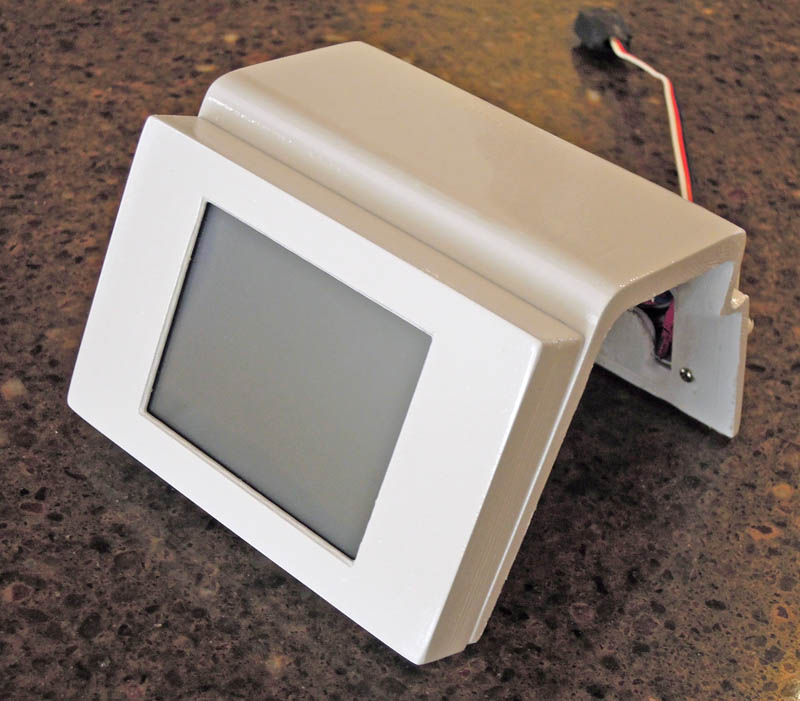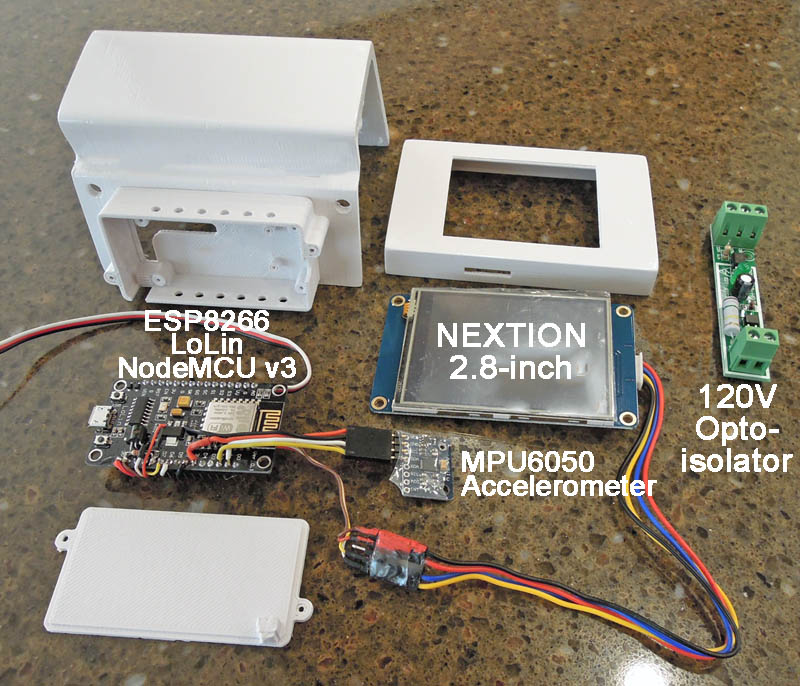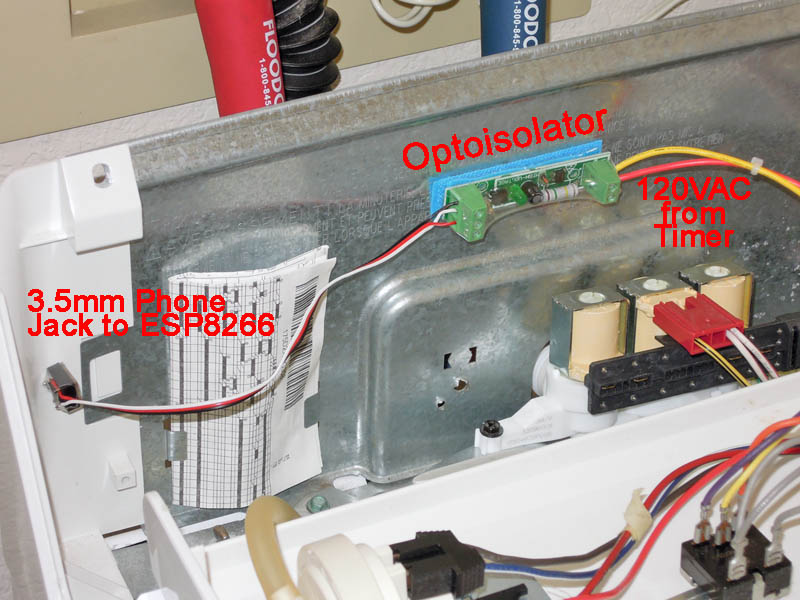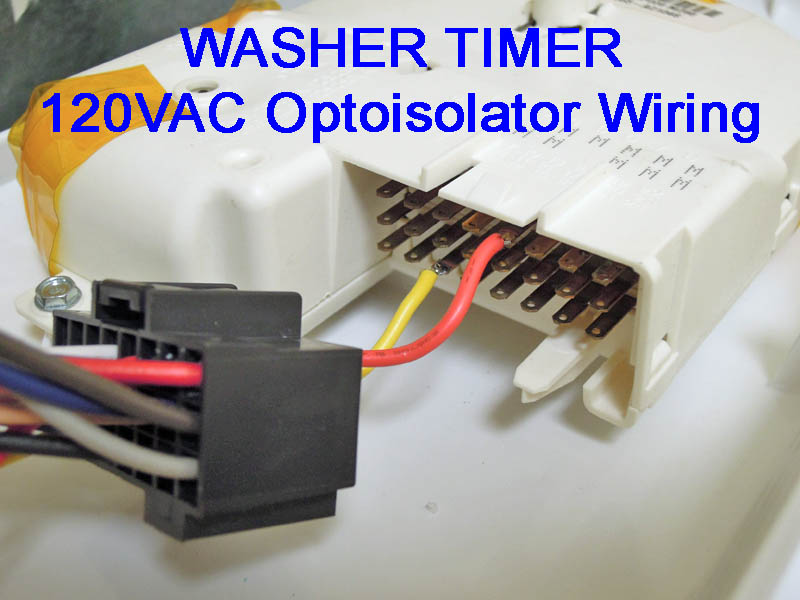Cool projects! More photos of working Nextion projects will help spread the Nextion plugin love. So keep the photos coming!
Currently the Nextion wiki (
https://www.letscontrolit.com/wiki/index.php/Plugin75) is an empty page. I'd volunteer to add some information to it if I was granted write/edit privileges.
Some project details to share to help inspire other Nextion/ESPeasy projects:
My recently completed Nextion project is a simple application that provides Amazon Echo voice notifications when the laundry is ready. The device slips onto the dryer's control panel and is held in place by a hidden magnet. Power is provided by a orphan USB charger supply.

- Finished unit.
- LaundryBuddy1_800.jpg (96.21 KiB) Viewed 282133 times
Overview:
A single ESP8266 monitors the washer and dryer, which are ten year old GE machines. ESPeasy's Nextion plugin communicates the touch screen entries to the home automation controller (Openhabian) using MQTT. In turn, the home automation system can interact with the ESP8266/Nextion using HTTP messages. All touch screen commands have equivalent Echo voice commands (touch and voice commands duplicate each other).
Hardware:
The ESP8266 is the Lolin NodeMCU v3. It's my go-to board for ESPeasy projects. Cost is less than $5 USD from China suppliers. The display is a $20 Nextion 2.8-inch, #NX3224T028.
Here's an overview of all the pieces, including the 3D printed plastic parts:

- All the pieces.
- LaundryBuddy2_800.jpg (148.23 KiB) Viewed 282133 times
The ESP8266 needs to know when the washer or dryer are running and when they turn off. My goal was to avoid any electrical connections to them. This was possible on the dryer using a $2USD
MPU6050 accelerometer that senses vibration from the spinning drum. Sensitivity is amazing, it can detect ANY size laundry load. The ESP8266 has a MPU6050 plugin that makes this possible with minimal effort.
But the washer required invasive electrical surgery. My machine doesn't have indicator lights and sensing vibration won't work because of the motionless soak cycles. Monitoring machine current was considered, but current draw is nearly zero during some operating states so current loop solutions weren't practical.
The chosen solution was a $2USD high voltage
optoisolator board designed for 220VAC. Fortunately it works fine on the washer's 120VAC mains without any modifications. The board safely isolates the washing machine's high voltage and provides TTL compatible On/Off status to the ESP8266. For moisture protection all PCB circuitry was coated in epoxy and protected with shrink wrap.

- Optoisolator in washing machine.
- Optoisolator1_800.jpg (116.12 KiB) Viewed 282133 times

- Optoisolator connection to washer machine timer.
- WasherTimer1_800.jpg (96.7 KiB) Viewed 282133 times
The plastic parts were created in 123D Design and 3D printed in white ABS plastic. All visible surfaces were sanded, acetone polished, then spray painted with Appliance White epoxy paint.
Basic Operation:
The home automation system (Openhabian) provides the interface to the Amazon Echo voice functions and monitors the machines with two large Rules files. Besides giving vocal announcements when the washer or dryer are done, it also provides loss-of-communication warnings and reports user mistakes (like forgetting to turn on the machine). Some simple animations are shown on the display to indicate the operating mode.
Below is a video of the washer and dryer running. At the 13 second mark the washer ends it cleaning cycle (graphic changes color). Not heard on the video is the "The washing machine is done, your laundry is ready" message broadcast by our Amazon Echo speakers.
https://youtu.be/gVsYJ0QBaxY
- Thomas